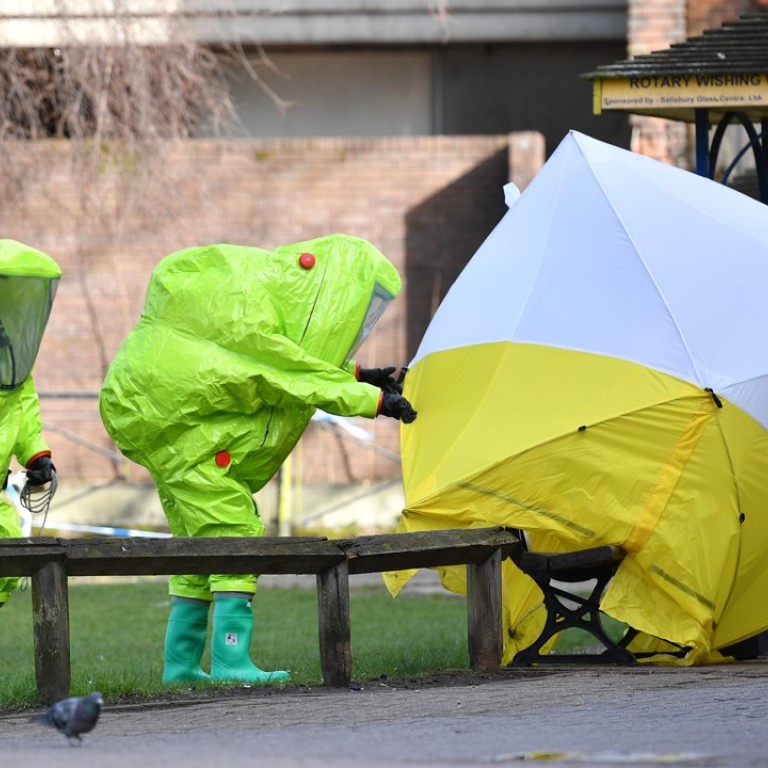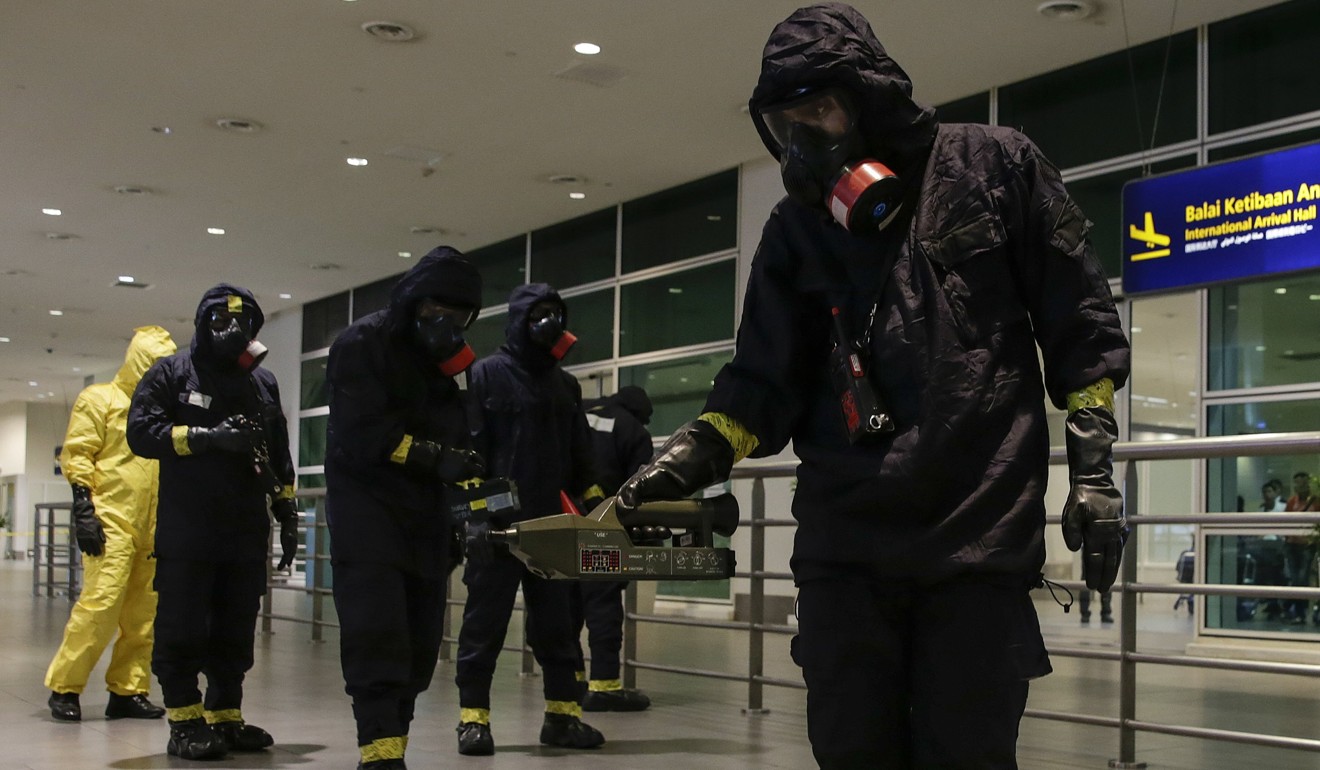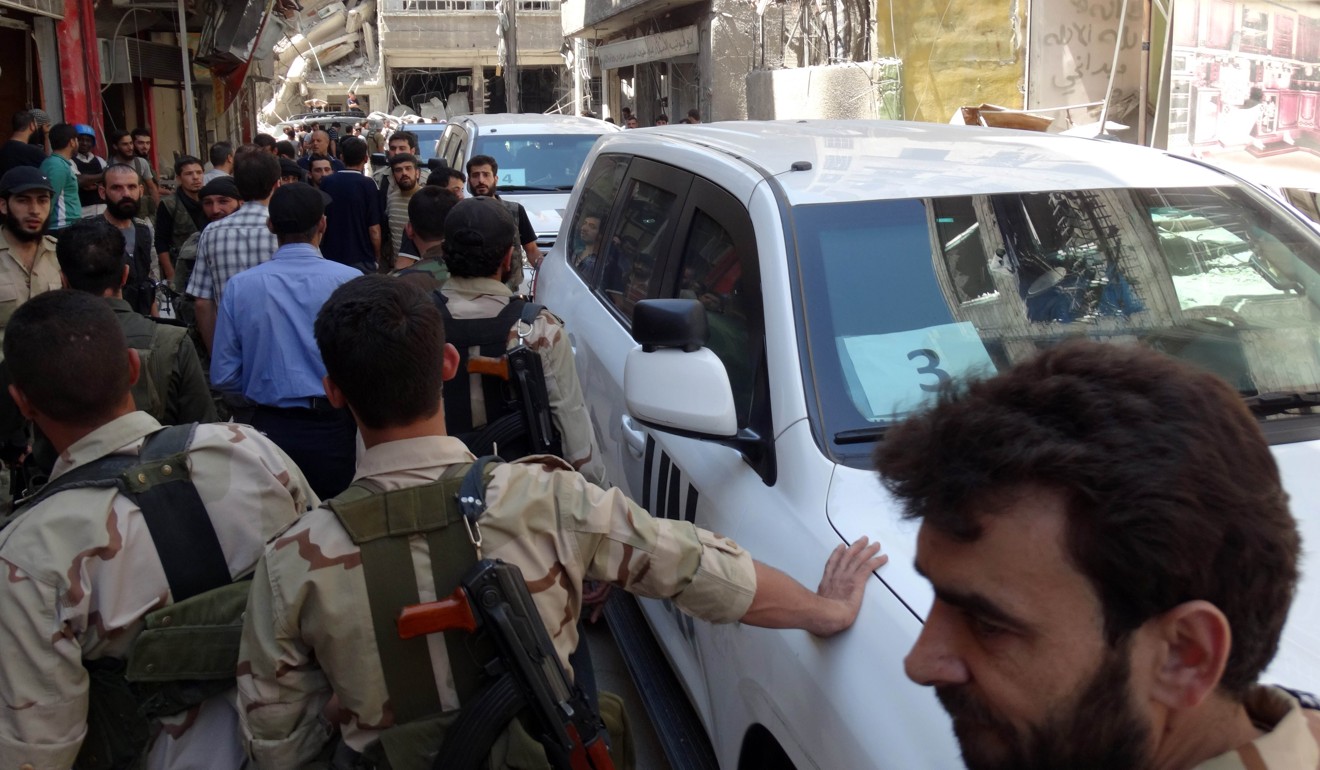
Analysis | Complex and dangerous, nerve agents are rarely used for assassinations
Thousands of people have been fatally gassed with nerve agents on battlefields since the second world war, most recently in Iraq and Syria, but they are not a weapon of choice for urban assassinations.
Sergei Skripal, a 66-year-old former Russian double agent, and his 33-year-old daughter Yulia were poisoned with a rare toxin on Sunday at a shopping centre in Salisbury, southern England, and are critically ill in hospital, police said.

Investigators said they had identified the specific agent, but were not saying what it was.
The attack appeared to be a well-planned hit with the backing of a powerful organisation aiming to intimidate opponents, not a lone actor, according to some experts.
Nerve agents have rarely been used outside warfare.
The most recent example was the assassination with VX of Kim Jong-nam, the North Korean leader’s half-brother, in the Kuala Lumpur airport in February 2017.
Sarin, in a dilute form, was released in the Tokyo subway in 1995, killing 12.

Manufacturing VX or sarin requires sophisticated chemical processing, specialised equipment, access to precursors and knowledge of how to carry out an attack.
Obtaining the raw ingredients would not be too difficult, but producing nerve agents, also known as organophosphorus compounds, must be carried out in a controlled environment, not a crude basement lab.
The final product, a highly toxic, colourless and odourless liquid, will kill whomever it comes into contact with, exposing the attacker to serious risk, either through inhalation, ingestion, or skin contact.

If exposed to a powerful dose, a victim will typically die from asphyxiation or cardiac arrest within minutes because of a loss of control of the respiratory system and other muscle functions. Those who survive frequently suffer long-term neurological damage.
Based on police reports of the Salisbury incident, experts said it is most likely that the toxin was delivered with an aerosol spray or a wipe, and transferred to the skin or clothing of the victims. They in turn probably exposed a police officer attending the incident who developed less serious symptoms.
In addition to a wide range of documented nerve agents, there are less well-known varieties, such as tabun and soman. Experts said it should not be ruled out that a sophisticated, less known variety was used in Salisbury.
“If the substance is not a well-known one, or even if it is a known nerve agent like VX, there has to be high technology behind it,” said Ake Sellstrom, a Swedish scientist who worked on United Nations missions to dismantle chemical weapons programmes in Iraq and Syria.

While it is possible for a well-trained assailant to carry out such an attack, it is highly unlikely that a lone-wolf could have done it. In any case, it would be more useful to try and trace the origin of the nerve agent.
“I would look more towards the source: where did the stuff come from?” Sellstrom said.
Andrea Sella, a professor of inorganic chemistry at University College London, backed Sellstrom’s assessment.
“A key forensic issue here is to identify impurities and residues that might provide clues as to the precise chemical process used to manufacture the material,” she said. “There is no question that the authorities will be looking for the container used to deliver the material as the chemical contents would be a gold mine.”
Identifying precise chemical markers would be a big step toward pinpointing the source.

There has been speculation in the West that Russia, even though it has destroyed its declared chemical weapons stockpile, could still be behind the attack – a suggestion dismissed by Moscow.
Any use of chemicals as a weapon is banned under the 1997 Chemical Weapons Convention and this would include the Salisbury attack. The Salisbury attack is expected to be raised at The Hague-based Organisation for the Prohibition of Chemical Weapons, a diplomatic source said.
Speaking in Brussels on Thursday, OPCW leader Ahmet Uzumcu did not specifically mention Salisbury, but he said anyone who violates the treaty should be held accountable.
“Let me be clear – under the CWC, any toxic chemical used for hostile purposes is unequivocally a chemical weapon,” he said.

